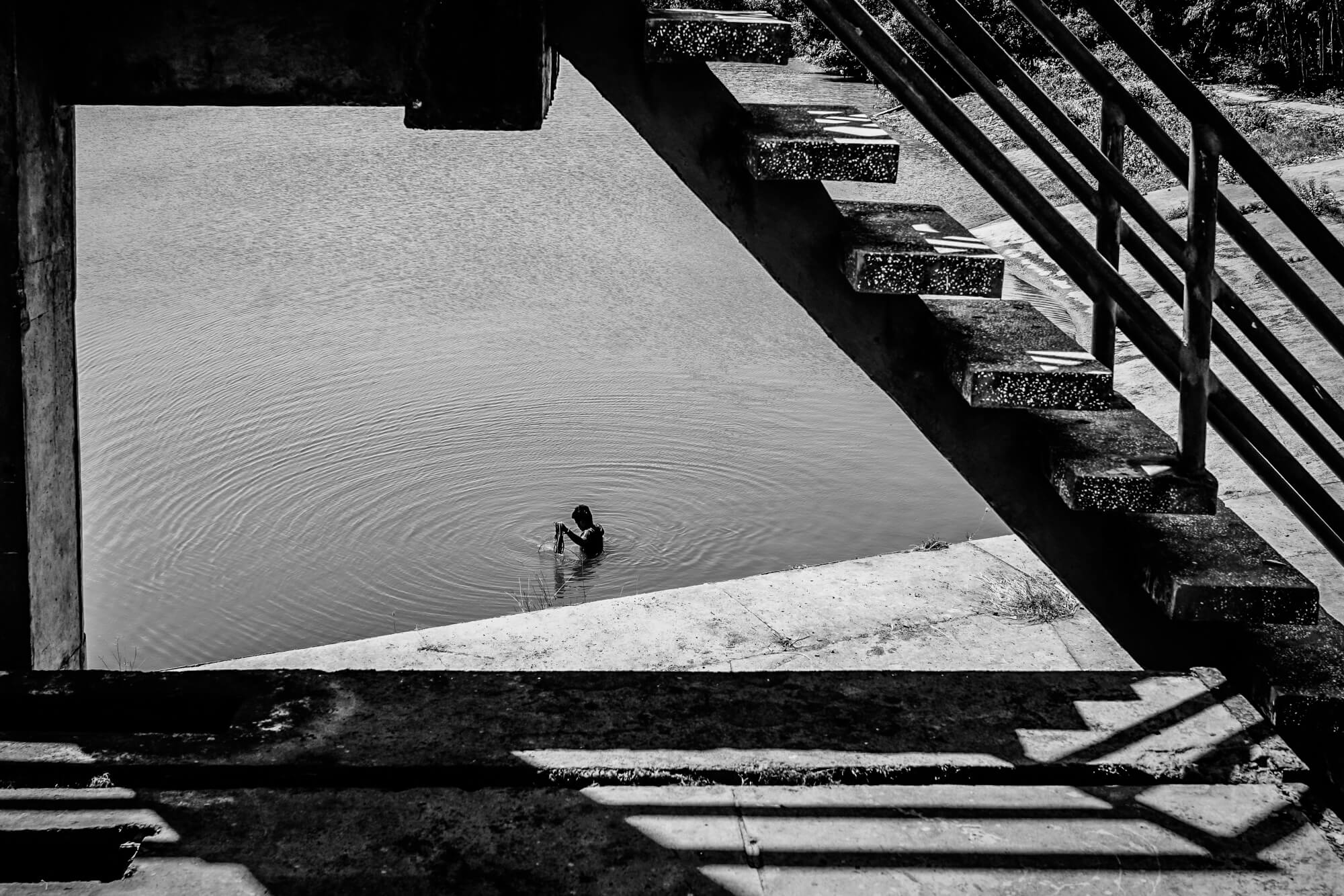A few days ago I found time between a busy month of assignments and planning two upcoming weddings to head to the Mekong Delta for a bit of personal project work. It was long overdue for sure, and felt great to be out exploring, shooting for myself and a project, unbound by client expectations. My good friend and colleague Tim joined as well and our topic of focus was the current climate crises affecting Vietnam and other locations in the region, and world for that matter.
For this initial endeavor, we focused on Ben Tre Province, which has been hard hit by the worst drought in nearly a century, as well as major saltwater intrusion problems it’s facing to boot.
For this project, being unbound and personal as it is, I also wanted to shoot in a somewhat different style that I typically do. Since the subject matter is not always terribly visual, or beautiful at least, rather than shooting a straightforward documentary style, for this project I’m trying to see and shoot with a bit looser, more graphic eye.
A man hand fishing on the freshwater side of a large lock dam that keeps out the seawater coming from Ben Tre’s coastal side.
With no rain since last October, many of the rice fields are cracked and parched. This region typically gets 3 harvests per year, but the first one, which should have been started by now, can’t because of the lack of rain. In most past years, the end of April and start of May would have already brought enough precipitation to prepare the fields.
Ngoc Lan, 62, and her husband Van Dan, 74, look across the road at their dry fields from a small shop they run for additional income. With the planting of rice still not able to happen, they must rely solely on the income from the shop, which typically is not much.
Not only the crops are affected, but also the livestock many rely on for food and income. Farmers have had to purchase water for their animals, as giving them only the salty water found in the natural water sources affects their growth and health, or worse.
A rice field, while not dried out, is inundated with saltwater, in which the plants will not grow or flourish. The farmers must wait for the freshwater rain to come to wash it away before a new crop can be planted.
In another rice field, the crop was started and it grew a bit, before the combination of no rain and saltwater killed the crop. Now, the farmers can only cut it down to feed to the cows.
A woman battles the scorching and dry heat to cut down the damanged rice crop to feed her animals.
Thu, 48, pulls water from the canal to water her morning glory plants, which are able to survive, but not thrive with saltwater.
With farming rice becoming a somewhat fragile existence, many on Cu Lao Dat island have turned to shrimp farming instead. While setting up a farm requires a large investment, the increased profitability and stability are worth it to many. Here, a man spreads lime on a shrimp pond to get it ready for the next crop of shrimp.
Nep, 69, looks at a test of his river water, which reads 25% saline. His shrimp farm is currently inoperable due to such high levels.
A woman looks out on her shrimp pond, which is flooded with saltwater and unable to produce until the rains come.
At the farm of Phuong, 34, saltwater intrusion in the rivers that is usually good enough for the pigs to drink is now causing them to mature much more slowly. The animals on the left, at 4 months should be 100kg and ready for sale, at which time the farmer can make about a $50 dollar profit. Right now, they’re only 50kg, half of a typical weight. When feeding them salt laden water, they take an extra month or two to reach even 70kg. This of course brings a much lower price, and at best a break even, or at worse a loss.
Tanks for rainwater, that when full at the end of the rainy season, are usually enough to carry the family through until it starts again. Since it’s already late, and not expected for at least another month, many have depleted their stocks and now must purchase water for themselves and their animals. Those lucky enough to have a well have another option, but the wells are becoming increasing unreliable as well.
Thi Dep, 70, in portrait with an orange tree in her garden. Because of the major saltwater intrusion, the fruits they produce are smaller and without much juice inside.
Coconut trees that Ben Tre is known for, are also surviving, but not thriving. They’re producing fruit, but smaller in size and with a different color and taste than normal.
As we were out exploring, a few drops of rain fell from the sky. I can only imagine how it must torment the farmers as they wait for the skies to really open up and provide the life giving water they’re so desperate for right now.
I think that’s it for the moment. I’ll keep working on this project as much as I can and be back with another installment soon.


















